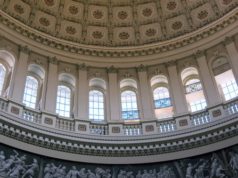In recent months, the landscape of government administration has been rocked by a series of shocking revelations that have unveiled systemic issues within various governmental agencies. As citizens increasingly demand transparency and accountability from their leaders, these developments have sparked a national conversation about the integrity of public service. This article aims to dissect the recent findings, analyze the implications of corruption and mismanagement, and explore the legislative responses that are being proposed to restore public trust. By examining specific case studies of misconduct, we can better understand the challenges that lie ahead for governance in the modern era.
1. Introduction: Understanding the Context of Government Administration Developments
Government administration is the backbone of public service, responsible for implementing policies and managing resources that affect the daily lives of citizens. However, recent events have cast a shadow over this essential function, revealing a troubling pattern of misconduct and inefficiency. As various investigations unfold, it has become increasingly clear that issues such as corruption, nepotism, and mismanagement are not isolated incidents but rather indicative of deeper systemic flaws. This context is crucial for understanding the urgency of reform and the need for a comprehensive approach to restore faith in governmental institutions.
2. Recent Revelations: Key Findings from Investigations into Government Practices
Investigations conducted by independent watchdog organizations and governmental oversight bodies have unveiled a series of alarming findings. Reports indicate that numerous agencies have been involved in questionable practices, including the misuse of funds, lack of adherence to procurement regulations, and failure to comply with ethical standards. For instance, a recent audit of a major federal agency revealed that millions of dollars were unaccounted for, with funds allegedly diverted to personal accounts of high-ranking officials. These revelations have prompted calls for greater scrutiny and have highlighted the urgent need for reform in government operations.
3. The Impact of Corruption: How Mismanagement Affects Public Trust and Resources
The ramifications of corruption and mismanagement extend far beyond financial losses; they erode public trust in government institutions. When citizens perceive their leaders as untrustworthy, it undermines the very foundation of democracy. Public resources, which should be allocated for the common good, are often squandered or misappropriated, leading to a decline in essential services such as education, healthcare, and infrastructure. This loss of confidence not only affects current governance but also deters future investments and participation from the public, creating a vicious cycle that is difficult to break.
4. Legislative Responses: New Policies and Reforms Addressing Administrative Failures
In response to the growing concerns surrounding government administration, lawmakers are beginning to propose a series of reforms aimed at enhancing transparency and accountability. Proposed legislation includes stricter oversight mechanisms for public spending, the establishment of independent review boards to investigate allegations of misconduct, and mandatory ethics training for government employees. Additionally, some legislators are advocating for the implementation of whistleblower protections to encourage individuals to report unethical practices without fear of retaliation. These measures are designed to create a more robust framework for governance that prioritizes integrity and public service.
5. Case Studies: Analyzing Specific Incidents of Misconduct in Government Agencies
To illustrate the pervasive nature of misconduct within government agencies, several case studies have emerged that highlight specific incidents of corruption. One notable example involved a state department where officials were found to have engaged in a kickback scheme with contractors, inflating project costs and pocketing the difference. Another case involved a federal agency that failed to follow proper hiring protocols, resulting in nepotism and the appointment of unqualified individuals to key positions. These incidents not only demonstrate the need for immediate action but also serve as cautionary tales of what can occur when oversight is lax and accountability is absent.
6. Conclusion: The Path Forward for Transparency and Accountability in Governance
As the dust settles on these shocking developments in government administration, it is clear that the path forward will require a concerted effort from all stakeholders involved. Citizens, lawmakers, and government officials must work collaboratively to foster a culture of transparency and accountability. This includes not only implementing new policies and reforms but also encouraging civic engagement and public discourse on governance issues. By prioritizing ethical conduct and responsible management of resources, it is possible to rebuild trust in government institutions and ensure that they serve the public interest effectively and equitably.
The recent revelations regarding misconduct in government administration serve as a wake-up call for both leaders and citizens alike. As we navigate the complexities of governance in an increasingly interconnected world, the importance of transparency and accountability cannot be overstated. By addressing the systemic issues that have been brought to light, we can pave the way for a more trustworthy and effective government that truly represents the interests of its constituents. The journey toward reform may be challenging, but it is essential for the health of our democracy and the well-being of society at large.
































